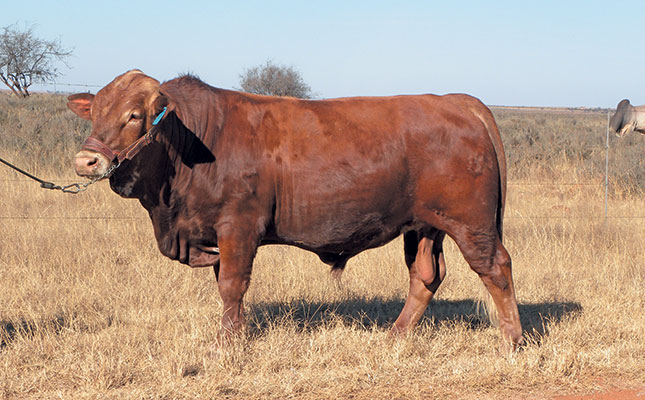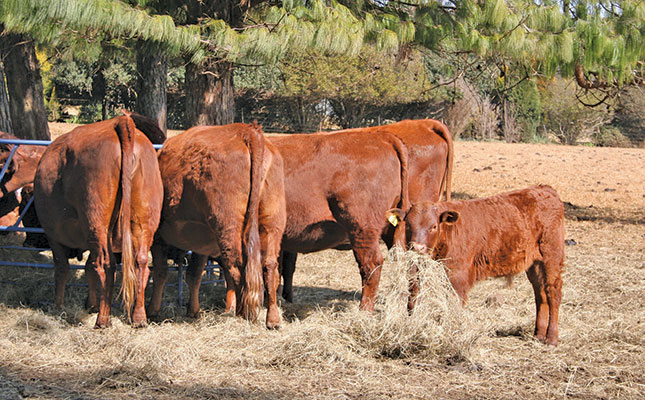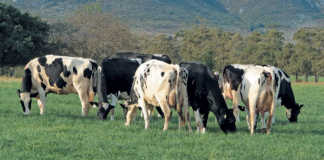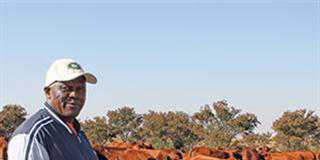
Photo: FW Archive
Approximately 60% of the 13,84 million cattle in South Africa are owned by commercial farmers and 40% by emerging and communal farmers. The latter keep their cattle on communal grazing land and rely more than commercial farmers on indigenous knowledge to manage their herds.
Productivity from this farming system is likely to be affected by drought, stocking density, livestock reproductive diseases such as brucellosis and vibriosis, and poor genetic improvement due to high rates of inbreeding and poor-quality bulls.
In addition, poor or improper fencing contributes to uncontrolled matings, the spread of disease, and an undesirable bull-to-cow ratio, amongst other problems. Buying good-quality bulls is also problematic for communal farmers due to the high cost of these animals, and maintaining them and keeping disease-free in this system is anything but easy.
All of these challenges tend to result in poor-quality beef cattle with low weaning weights, low calving rates, and calves born to dams infected with diseases such as brucellosis.
Breeding concepts explained
Artificial insemination (AI) in cattle is a breeding method in which semen collected from a bull proven to be fertile is deposited manually into the uterus of a cow. The procedure not only enhances genetic improvement, but improves reproductive efficiency. It also ensures efficient use of genetically superior bulls.
Natural breeding is the process whereby a bull mates with a cow to produce a calf. The bull must be fertile and capable of serving a number of cows to achieve optimal production.
There are many advantages to using AI in your beef cattle operation. To begin with,
good-quality semen from genetically superior bulls is accessible at a fraction of the price
of a good-quality bull. A semen straw, for example, will cost in the region of R100 to R250, while a good-quality bull will cost a minimum of R20 000. The expense of superior bulls often compels most communal farmers to purchase cheap ones with inferior genetics and usually without performance or health records.
Using AI also ensures that more calves are born within a specific period, making management easier. In contrast, natural breeding in communal systems takes place all year round, which makes management more awkward, coupled to the fact that availability of feed resources varies during the year.
More efficient usage of bull
During natural mating, a bull deposits far more semen than is needed to produce a pregnancy. In addition, the number of female animals that a bull can effectively service depends on bull maturity, nutritional status, fertility, libido, length of breeding season, bull-to-cow ratio and the structural soundness of the animal. These factors limit the number of natural matings a bull can achieve.
Collected semen, however, can be diluted to create a large number of straws from a single ejaculate. These can then be transported with ease, enabling female animals to be inseminated anywhere. Semen can also be stored for extended periods, allowing a bull to produce offspring long after his natural reproductive life has ended.
Disease control
Natural mating may be accompanied by the transmission of diseases, and venereal diseases are all too often transferred between male and female animals. Certain pathogens can also be transmitted through semen, even when making use of AI.
To circumvent this, bulls are subjected to rigorous testing to ensure they are free of important reproductive disease and pathogens. Collected semen is also routinely checked for quality, which can help to avoid problems associated with male infertility.
It has also been shown that the use of AI can assist in the control of trichomoniasis and vibriosis, which result in infertility, irregular cycles, abortions, weak calves and early embryonic deaths, leading to infertile cows that have to be culled.
Artificial versus natural
There are disadvantages to using AI as opposed to natural breeding methods. AI requires more knowledge, managerial skills and resources, including facilities required to perform the insemination. Skills include the ability to detect when cows are in heat, the timing of insemination, and the AI technique.
Most proven AI synchronisation protocols can achieve conception rates of 40% to 60%; however, it is possible to have extremely poor conception rates with AI (less than 20% or worse) if certain variables are not managed properly. Between 5% and 7% of in-calf cows show signs of oestrus at least once during gestation. The intrauterine insemination of an in-calf cow can result in an abortion.
Organisms may also be carried from the vagina into the uterus during AI, and it is therefore advisable to use protective sanitary sleeves over the AI sheath and pistolette.

Using natural service requires management of factors that influence the fertility of the bulls and cows, such as nutrition, health and monitoring animal age and reproduction. In addition, bulls tend to fight, and run the risk of getting injured; this may be costly to treat and will require good handling facilities.
Replacing the bull with another good-quality one is also expensive.
Making the right choice
When having to choose between natural service and AI, a communal farmer needs to decide whether AI will be suitable and practical, especially from an operational point of view.
The costs involved in both breeding methods also need to be compared. Lack of knowledge, limited access to information, and the cost of the technology are among the reasons that communal farmers don’t use AI.
However, while natural service may be the easiest and most convenient method of breeding for communal farmers, their breeding objectives are hampered by the lack of facilities and properly fenced camps.
Communal farmers certainly have the potential to contribute to meeting the demand for meat in South Africa. However, significant support and skills transfer to these farmers are needed to ensure improvement in the quality of their cattle. AI can contribute towards achieving this goal, in particular in view of the costs associated with the buying of a bull of superior quality and genetics.
Email Dr Ben Greyling at [email protected]













